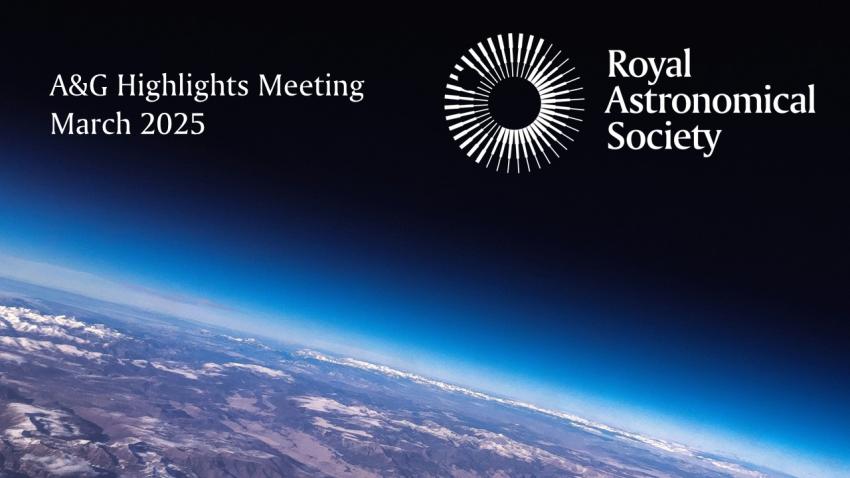Book your FREE RAS A&G Highlights Meeting Hybrid Ticket
16:00 Prof Mike Lockwood (President)
Welcome and Announcements
16:05 Prof Mike Lockwood (President)
The Great Aurorae of 2024
16:35 Dr Andy Smith (Northumbia University)
Forecasting Hazardous Space Weather with AI
Near-Earth space is highly dynamic, principally driven by the variable and continuously outflowing solar atmosphere. This “space weather” is mostly benign, much like terrestrial weather. However, as with terrestrial weather, we need to be able to forecast potentially damaging events such that we can take mitigating action. Space weather poses a hazard to many aspects of modern society, including satellites, communications and power infrastructure.
In this lecture I will compare and contrast two recent methods designed to produce useful, actionable forecasts of inclement space weather using AI techniques. The first method is guided by the physics of active space weather intervals, which enables broad warning periods, however this comes with several fundamental limitations. The second method can provide highly customisable and specific warnings, but this comes with a reduction in its interpretability and a detachment from the physics of the system.
Dr Smith was awarded his PhD in 2018 from the University of Southampton. His PhD focused on the physics of the plasma environments around Saturn and Mercury, planetary “space weather”. He then returned to Earth, working at UCL where he combined the plasma physics expertise with AI to develop and interrogate space weather forecasting models. In 2022 he was awarded a NERC Independent Research Fellowship, which he currently holds at Northumbria University.
17:05 The Eddington Lecture: Dr Melissa Ness, (Australian National University in Canberra)
Reconstructing the History of the Milky Way Galaxy Using Stars
Astronomy of the Milky Way Galaxy has entered a transformative era. The Gaia mission and an ensemble of ground-based spectroscopic surveys are delivering element abundances and velocities for millions of stars. These data provide both an opportunity to deepen our understanding of galaxy formation and to test the “limits of knowledge.” There have been several surprises that have come out of the large stellar surveys and data-driven methodologies built to analyse them. We have learned that up to 1 in 100 stars in the disk are “abundance doppelgangers” – chemically identical but unrelated – limiting the prospect of reconstructing the disk’s star cluster building blocks. Furthermore, for stars in the disk, most of the element abundances measured for most of the stars can be predicted to a precision of better than 10 percent given only two key abundances. However, this is not the case for stars in the stellar halo. These findings frame how we can most effectively work with the data to turn photons into a quantified description of Galactic history and provide strong constraints on the star formation and mixing processes that have set the Galactic environment.
Melissa Ness is based at the Research School of Astronomy and Astrophysics (RSAA) at the Australian National University in Canberra, Australia. She works with large stellar survey data to understand the formation of the Milky Way Galaxy, with an emphasis on developing data-driven approaches to measure and interpret the element abundance and orbital distributions of stars. Prior to joining the RSAA she was based at Columbia University and the Center for Computational Astrophysics (USA) as well as the Max Planck Institute for Astronomy (Germany) and worked as a microwave design engineer for a number of years, in Australia and Canada.
17:55 Prof Mike Lockwood (President)
Closing Remarks
Drinks RAS, Burlington House


